Related Research Articles

Mu-metal is a nickel–iron soft ferromagnetic alloy with very high permeability, which is used for shielding sensitive electronic equipment against static or low-frequency magnetic fields.

Pepper spray, oleoresin capsicum spray, OC spray, capsaicin spray, or capsicum spray is a lachrymator product containing the compound capsaicin as the active ingredient that irritates the eyes to cause burning and pain sensations, and temporary blindness. Pepper spray is used as a less lethal weapon in policing, riot control, crowd control, and self-defense, including defense against dogs and bears. Its inflammatory effects cause the eyes to close, temporarily taking away vision. This temporary blindness allows officers to more easily restrain subjects and permits people in danger to use pepper spray in self-defense for an opportunity to escape. It also causes temporary discomfort and burning of the lungs which causes shortness of breath.

The compound 2-chlorobenzalmalononitrile (also called o-chlorobenzylidene malononitrile; chemical formula: C10H5ClN2), a cyanocarbon, is the defining component of tear gas commonly referred to as CS gas, which is used as a riot control agent.

Phenacyl chloride, also commonly known as chloroacetophenone, is a substituted acetophenone. It is a useful building block in organic chemistry. Apart from that, it has been historically used as a riot control agent, where it is designated CN. It should not be confused with cyanide, another agent used in chemical warfare, which has the chemical structure CN−. Chloroacetophenone is thermally stable, and is the only tear agent that is distillable at ambient conditions.
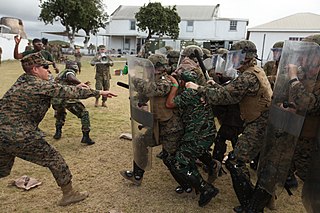
Riot control measures are used by law enforcement, military, paramilitary or security forces to control, disperse, and arrest people who are involved in a riot, unlawful demonstration or unlawful protest.

Tear gas, also known as a lachrymator agent or lachrymator, sometimes colloquially known as "mace" after the early commercial self-defense spray, is a chemical weapon that stimulates the nerves of the lacrimal gland in the eye to produce tears. In addition, it can cause severe eye and respiratory pain, skin irritation, bleeding, and blindness. Common lachrymators both currently and formerly used as tear gas include pepper spray, PAVA spray (nonivamide), CS gas, CR gas, CN gas, bromoacetone, xylyl bromide and Mace.
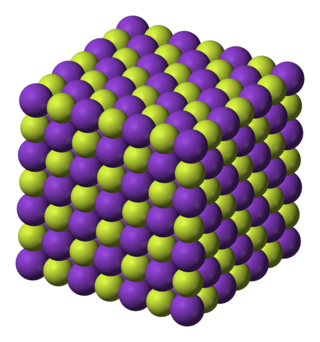
Potassium fluoride is the chemical compound with the formula KF. After hydrogen fluoride, KF is the primary source of the fluoride ion for applications in manufacturing and in chemistry. It is an alkali halide salt and occurs naturally as the rare mineral carobbiite. Solutions of KF will etch glass due to the formation of soluble fluorosilicates, although HF is more effective.
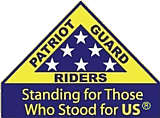
The Patriot Guard Riders (PGR) is an organization based in the United States whose members attend the funerals of members of the U.S. military and first responders at the invitation of a decedent's family.
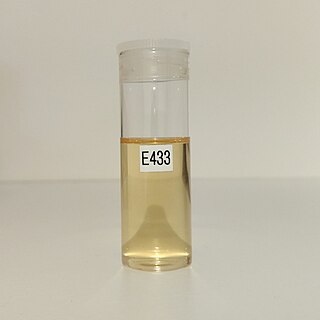
Polysorbate 80 is a nonionic surfactant and emulsifier often used in pharmaceuticals, foods, and cosmetics. This synthetic compound is a viscous, water-soluble yellow liquid.
Life Alert Emergency Response, Inc. is a nationwide American company, with headquarters in Encino, California, which provides services that help elderly contact emergency services. The company was founded in 1987. The company's system consists of a main unit and a small wireless help button that is worn by the user at all times. Former Surgeon General C. Everett Koop appeared in commercials for Life Alert starting in 1992, stating that he used one. He remained a spokesman for the company until his death in 2013.
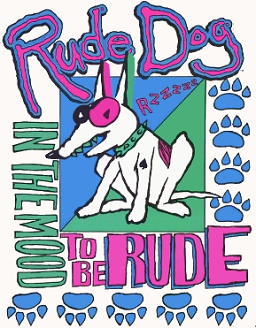
Rude Dog is a fictional animated white dog originally created by artist Brad McMahon while under contract to Sun Sportswear in the 1980s as part of a line of surfing- and skateboarding-related clothing. As of 30 August 2015, Rude Dog was once again trademarked, this time in the name of original series/character creator Brad McMahon. McMahon also created Rude Dog's gang of canine misfits known as "the Dweebs", as well as Seymour, Rude Dog's nemesis.

From 1948 to 1975, the U.S. Army Chemical Corps conducted classified human subject research at the Edgewood Arsenal facility in Maryland. The purpose was to evaluate the impact of low-dose chemical warfare agents on military personnel and to test protective clothing, pharmaceuticals, and vaccines. A small portion of these studies were directed at psychochemical warfare and grouped under the prosaic title of the "Medical Research Volunteer Program" (1956–1975). The MRVP was also driven by intelligence requirements and the need for new and more effective interrogation techniques.

Scho-Ka-Kola is a German brand of chocolate consumed for its strong caffeine and kola nut mix. The chocolates have a caffeine content of about 0.2 percent, which is derived from the cocoa content of 58 percent and the addition of 2.6 percent roast coffee and 1.6 percent kola nut. The chocolate is divided into wedges held in a round metal canister. The red-and-white container design and recipe have changed very little since the original launch in 1936.

Advantium is a line of fast-cooking electric ovens for household use sold by General Electric. They use both halogen lamps and microwave energy, either separately or together.

Dreffa makes Swiss watches. The name is a trademark owned by TGX Holdings.
Glider, also known as WoWGlider or MMOGlider, was a bot created by MDY Industries, which interoperated with World of Warcraft. Glider automated and simplified actions by the user through the use of scripting to perform repetitive tasks while the user was away from the computer. This allowed the user to acquire in-game currency and level-ups of the character without being present to perform the required actions. As of 2008, it had sold approximately 100,000 copies. Glider was ultimately discontinued after a lawsuit was filed against MDY Industries by Blizzard Entertainment.

The Smiley cookie is a trademarked cookie that is distributed by the Eat'n Park Corporation of Homestead, Pennsylvania through their restaurants and online business, smileycookie.com. The signature Smiley Cookie was adapted from a cookie an employee enjoyed as a child in Western PA. Eat'n Park began baking their version in 1986 and coincided with the addition of in-store bakeries at its locations. The Smiley Cookie was first produced by Warner's Bakery, a small bakery in Titusville, Pennsylvania. It was trademarked in 1987. The Smiley Cookie became so popular that it was added to the logo of Eat'n Park. A competitor, Kings Family Restaurants produced the "Frownie", a brownie decorated with a frowning face. The "Frownie" was discontinued in 2015 after Kings was sold to a private equity firm. Eat'n Park filed several lawsuits against companies outside the restaurants' operating area to enforce its trademark on the Smiley Cookie. The costumed Smiley cookie made appearances throughout the Pittsburgh region and travels in a 1974 DIVCO Milk truck, which is now a branded-van known as the "Cookie Cruiser".

A toiletry bag is a portable container—usually a pouch with a drawstring or zippered closure—that holds body hygiene and toiletry supplies such as toothbrush and toothpaste, dental floss, cotton swabs, deodorant, nail clippers, tweezers, soap, shaving supplies, hairbrush, contact lenses and feminine products. Toiletry bags are most often used for traveling and in living circumstances where permanent shelves and cupboards are unavailable for use.
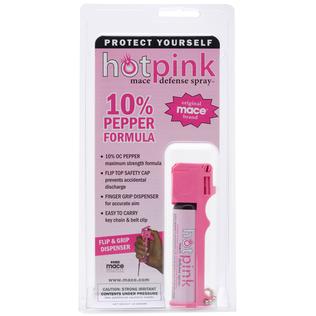
Mace Security International, Inc. a US-based company that specializes in producing personal safety and security products. Their product line includes popular items such as Mace pepper spray, stun guns, personal alarms, and law enforcement and private security equipment.

The Professional Picture Framers Association / PPFA is an international trade organization serving the art and framing community worldwide since 1971. Members include independent frame shop owners and staff, distributors and manufacturers of picture frame mouldings, supplies and equipment, art galleries, artists, and other businesses in the custom picture framing industry.
References
- 1 2 Leu, Chelsea (1 July 2017). "What's Inside Triple-Action Mace? Chili Peppers and UV Dye". Wired. Archived from the original on 1 July 2017. Retrieved 2 July 2017.
{{cite magazine}}: CS1 maint: bot: original URL status unknown (link) - ↑ Gerhardt, Nick. "27 Trademarked Names That Have Become Commonly Used Terms". The Family Handyman. Retrieved March 11, 2020.
- ↑ Quirk, Mary Beth (July 19, 2014). "15 Product Trademarks That Have Become Victims Of Genericization". Consumerist. Consumer Reports.
- ↑ Clankie, Shawn (1999). "Brand Name Use in Creative Writing: Genericide or Language Right?". In Buranen, Lise; Roy, Alice Myers (eds.). Perspectives on Plagiarism and Intellectual Property in a Postmodern World. SUNY Press. pp. 260–261. ISBN 978-0-7914-4080-3.
- ↑ Sarosh, Tuba (2021-11-26). "Pepper Spray vs Mace Spray: What's the Difference?". Tech Sherlock. Retrieved 2021-11-29.
- ↑ Gross, Daniel A. (November 4, 2014). "The Forgotten History of Mace, Designed by a 29-Year-Old and Reinvented as a Police Weapon". Smithsonian Magazine.
- ↑ "Trademark Status & Document Retrieval". tsdr.uspto.gov.
- ↑ "Trademark Status & Document Retrieval". tsdr.uspto.gov.
- ↑ "Trademark Status & Document Retrieval". tsdr.uspto.gov.
- ↑ "Trademark Status & Document Retrieval". tsdr.uspto.gov.
- ↑ "Mace vs. Pepper Spray – Pepper Spray Store". www.pepper-spray-store.com.